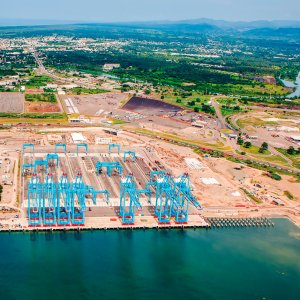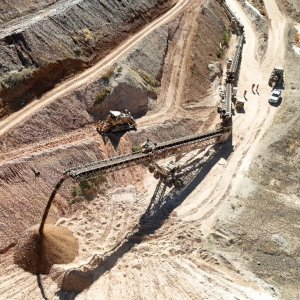PPP Potential Yet to be Unleashed

STORY INLINE POST
Q: How are federal budget cuts impacting the private sector, considering that projects now have to assume a greater amount of risk?
A: Infrastructure is an important motor of growth for all countries. Behind well-developed projects lies favorable competition and productivity that leads to employee retention and facilitates a higher quality of life. Considering that Latin America is a dynamic project region, the amount of infrastructure investment Mexico receives is significant. The country needs to realize that budget cuts are an opportunity to unleash potential investment. Mexico must invest in more basic infrastructure to promote additional development. The country has all that it needs to push forward the creation of private structures but there is a lack of project proposals.
Although the authorities reduced the amount of capital directed toward infrastructure, that does not signal the end of the industry. The public sector may be the main promoter of infrastructure plans but it is not the only one. When the government announced its National Infrastructure Program (NIP), it decided that the majority was going to be funded through public investment, especially the first phase. The plan included a portfolio of prioritized projects and the authorities have been able to execute those.
I believe the government intentionally left the largest infrastructure projects for the second part of the sixyear term to open up spaces for the private sector through PPPs. In general, public investment projects are not stable enough because they depend on the public budget and oil prices, among other economic factors that affect a country’s wellbeing. For this reason, private investment has a great deal of potential in Mexico. PPPs benefit the country as they connect the private and public sectors in a complementary way. The projects end up being designed more efficiently and carefully using risk analysis. PPPs are among the most efficient ways to mitigate risk. The projects require less public capital because only the most efficient or experienced players are involved.
Q: What can companies expect from the market and PPPs?
A: Mexico is one of the countries in Latin America that has executed the most PPPs along with Brazil, Argentina, Colombia and Peru. On a more global scale, Latin America represents 40 percent of the total number of projects and investments. We are staying at the forefront thanks to specific laws that are spurring projects like ports, highways and airports. If all the projects in the country were made to align with the requirements of the PPP law, without a doubt, Mexico would have a superior quality of projects.
Developers often make the mistake of putting speed ahead of due diligence, opting to complete a project faster by skipping necessary planning. There is nothing more expensive than to start a project without evaluation, planning and analysis because failing to do this can end up delaying a project for many years. Rehabilitation and maintenance are equally essential parts of the structure’s cycle. The initial preparation phase is the one that costs the least as it is completely on paper, while mistakes on the construction site are extremely expensive to correct and can even result in fees and penalties. It is incongruent that companies are not willing to invest an adequate amount of time in the initial phase of their project to assure the highest quality. Politicians, too, are in a hurry to finish projects and mistakenly think that certain steps can be accelerated. Citizens, through the public budget, are the ones who end up paying for these mistakes.
If everyone understood the law better, they would see the benefits of the new PPP regulations. Mexico is an interesting case because other countries have shown a greater appetite for development after approving similar PPP laws.
Q: How can companies mitigate delays and community discontent to avoid further costs?
A: Most countries consider community dialogue to be an essential part of the planning phase while Mexico greatly fears the idea. Developers in the country do not want to chance the possibility the surrounding community will reject the project. Obviously, if the project is not well planned or has a negative impact, it will not be welcomed. One of our clients asked us to evaluate a binational planning process for border bridges between the US and Mexico. It gave us the opportunity to clearly see the differences between the US and Mexico. These types of projects are complicated as they require simultaneous authorization. A project could be authorized by the US but it will not move forward if Mexico has not given approval. We have seen cases of projects that were approved 20 years ago in the US, only to be rejected in the present due to the changes of land use in Mexico. The process needs to be congruent to assure a fluid advance.
Mexico normally tries to evaluate projects quickly and asks developers to execute projects in two months, without preparation or studies. These projects normally end up taking eight years or more due to the large number of unforeseen circumstances. The US works completely differently. First, it creates the concept and then proposes it to the community. The project does not continue until the community approves it - and dialogue can take up to four years. Construction usually only takes a year as nothing impedes its completion after the discussions end. Communicating and consulting with surrounding communities ensures a well-planned project. Developers must understand that they do not need to consult every part of the project, such as the technical aspects, but only the details that affect the community in a significant way. Dialogue can be simple as communities are usually more concerned about the social benefits of the project. The general public only wants assurances on how their quality of life will be impacted.
Q: How will the construction of the NAICM change the industry?
A: The airport has the potential to become a magnet for investment from companies of all sizes. It is an intelligent mosaic of small, medium and large companies that benefit the infrastructure industry. Mexico has never had a project of this type and it pushes us to work toward improving our abilities as a country. Small and medium companies are getting the same chance as large and foreign companies to be part of this historic development. While the authorities are legitimately worried about the project finishing on time and on budget, it also is an opportunity to showcase Mexican companies and give them the chance of perhaps being invited to participate in other international projects. The message is to combine both elements, national and international companies, with an internal policy that strengthens entrepreneurship. It needs to be well received by the infrastructure chain.






















